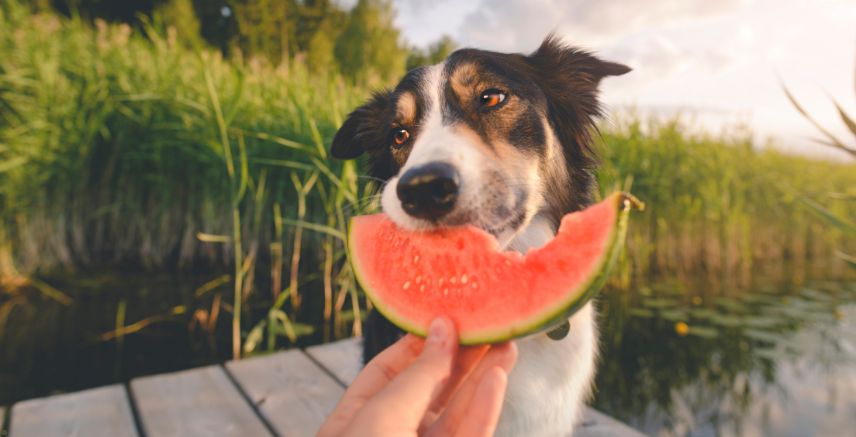Know What to Avoid & Why It's Dangerous
As loving dog owners, it’s natural to want to share our food with our furry companions. However, many human foods can be harmful—or even deadly—for dogs. Thankfully, there are great options for fresh, healthy dog foods. The Farmer’s Dog and Ollie both offer fresh, human-grade dog food with personalized plans. The Farmer’s Dog focuses on simplicity and whole-food ingredients, while Ollie includes more variety and superfoods. Ollie offers more flexible portions, while The Farmer’s Dog emphasizes minimal processing and clean nutrition.
Knowing what not to feed your dog is essential for keeping them safe and healthy. Here’s a list of common foods you should never feed your dog, along with the reasons why they should be avoided.
1. Chocolate
Chocolate contains substances called theobromine and caffeine, both of which are toxic to dogs. Even small amounts can cause vomiting, diarrhea, rapid breathing, abnormal heart rhythm, seizures and in severe cases, death. Dark chocolate and baking chocolate contain the highest levels of theobromine, making them especially dangerous.
2. Grapes and Raisins
Grapes and raisins can cause sudden kidney failure in dogs, even in small quantities. Symptoms may include vomiting, lethargy and decreased urination. The exact toxin in grapes is still unknown, which means it’s best to avoid them entirely.
3. Onions and Garlic
Onions, garlic, leeks and chives (whether raw, cooked or powdered) contain compounds that can damage a dog’s red blood cells, leading to anemia. Signs of toxicity may not appear for several days and include weakness, vomiting and pale gums. Garlic is considered even more toxic than onions, so avoid both.
4. Avocado
Avocados contain a substance called persin, which is harmless to humans but can be dangerous to dogs in large quantities. It can cause vomiting and diarrhea, and the large pit is a choking hazard or can cause a blockage if swallowed.
5. Alcohol
Even small amounts of alcohol can be toxic to dogs. It depresses the central nervous system, leading to confusion, vomiting, difficulty breathing, tremors and even coma or death. Alcohol is especially dangerous because dogs are much more sensitive to it than humans.
6. Xylitol (Artificial Sweetener)
Xylitol is a sugar substitute commonly found in sugar-free gum, candy, baked goods and even some peanut butters. In dogs, it causes a rapid release of insulin, leading to dangerously low blood sugar (hypoglycemia). Symptoms include vomiting, weakness, collapse and seizures. In some cases, it can also cause liver failure.
7. Macadamia Nuts
Macadamia nuts are highly toxic to dogs, even in small amounts. They can cause vomiting, increased body temperature, tremors and weakness, especially in the hind legs. Symptoms usually appear within 12 hours of ingestion.
8. Cooked Bones
While raw bones can be safe in some situations, cooked bones are a serious risk. They can easily splinter and cause choking, or puncture the digestive tract. Cooked bones should never be given as treats.
9. Caffeinated Beverages (Coffee, Tea, Energy Drinks)
Caffeine, like theobromine in chocolate, is a stimulant that can be toxic to dogs. Ingesting caffeine can cause restlessness, rapid breathing, heart palpitations, muscle tremors and seizures. Avoid leaving drinks like coffee or soda within your dog’s reach.
10. Raw Dough (with Yeast)
If a dog eats raw yeast dough, the dough can rise in their stomach, leading to bloating and severe pain. In some cases, it can even cause the stomach to twist (a potentially fatal condition known as bloat or gastric torsion). Additionally, the fermentation process produces alcohol, which is also toxic.
11. Fatty Foods and Trimmings
Greasy, fatty table scraps—like bacon, fried foods or meat trimmings—can upset your dog’s stomach and cause pancreatitis, a painful and serious inflammation of the pancreas. Symptoms include vomiting, abdominal pain and loss of appetite.
12. Salt and Salty Snacks
Too much salt can lead to sodium ion poisoning in dogs. Symptoms include vomiting, diarrhea, tremors, high body temperature and seizures. Salt is often found in chips, pretzels and processed foods—none of which are healthy for dogs.
What Should Dogs Eat Instead?
If you’re looking for healthy, safe and balanced meals for your pup, consider fresh dog food made specifically for canine nutritional needs. These meals are crafted with high-quality ingredients and are tailored to your dog’s age, size, and activity level.
Here are some trusted fresh dog food suppliers to consider:
- The Farmer’s Dog. Offers vet-formulated meals delivered fresh and pre-portioned based on your dog’s profile.
- Ollie. Uses human-grade ingredients and offers personalized meal plans with detailed feeding guides.
- Nom Nom. Provides fresh, restaurant-quality meals prepared by veterinary nutritionists.
- Spot & Tango. Offers both fresh and dry "UnKibble" recipes with no fillers or artificial additives.
- PetPlate. Delivers cooked, balanced meals in recyclable containers, designed by a veterinary nutritionist.
Final Thoughts
While sharing food with your dog may feel like a loving gesture, it’s important to know which foods are harmful. When in doubt, stick to treats made specifically for dogs and consult your vet before introducing anything new to their diet. Your pup’s health and safety should always come first—and with the growing variety of fresh dog food options, it's easier than ever to give them a diet that’s both safe and satisfying.
Keep reading to learn about different types of pet insurance plans.
